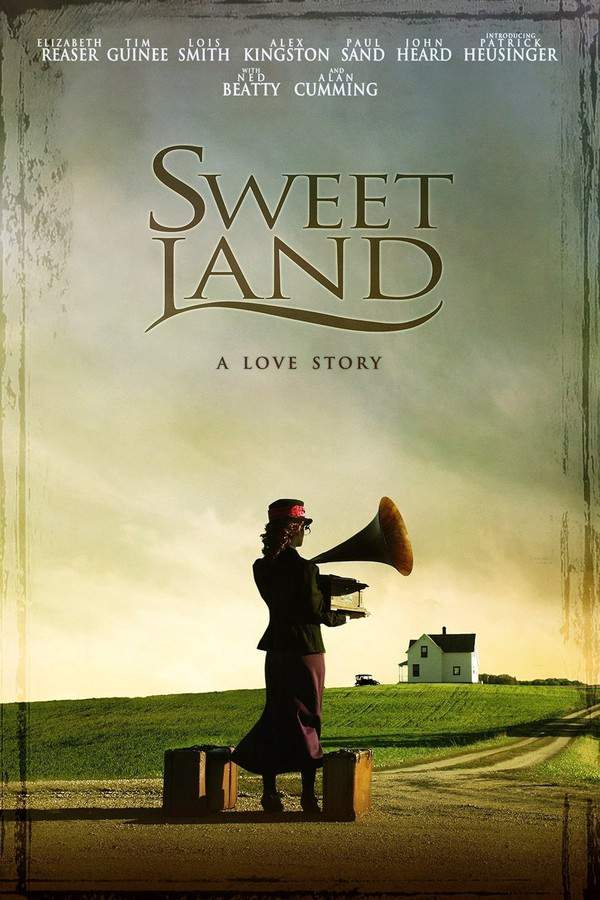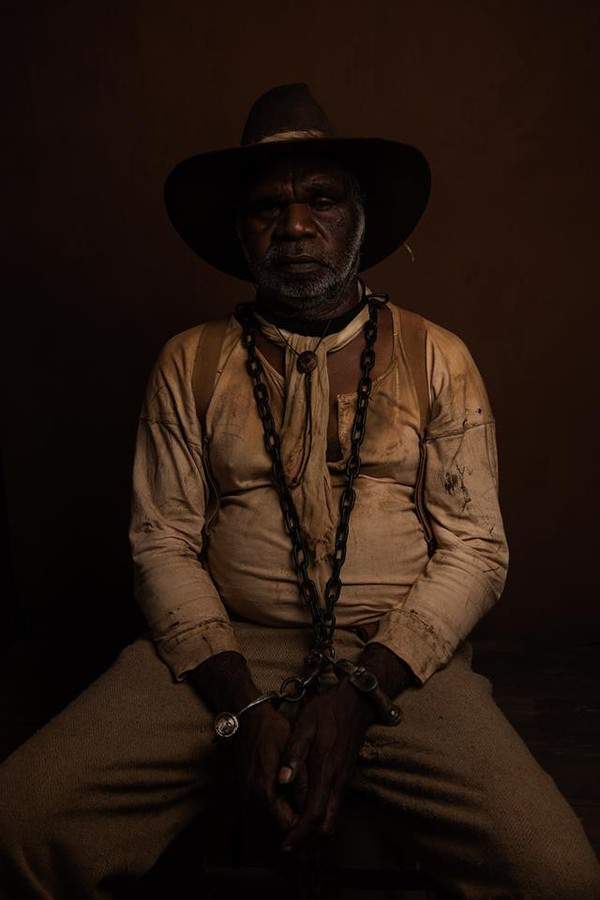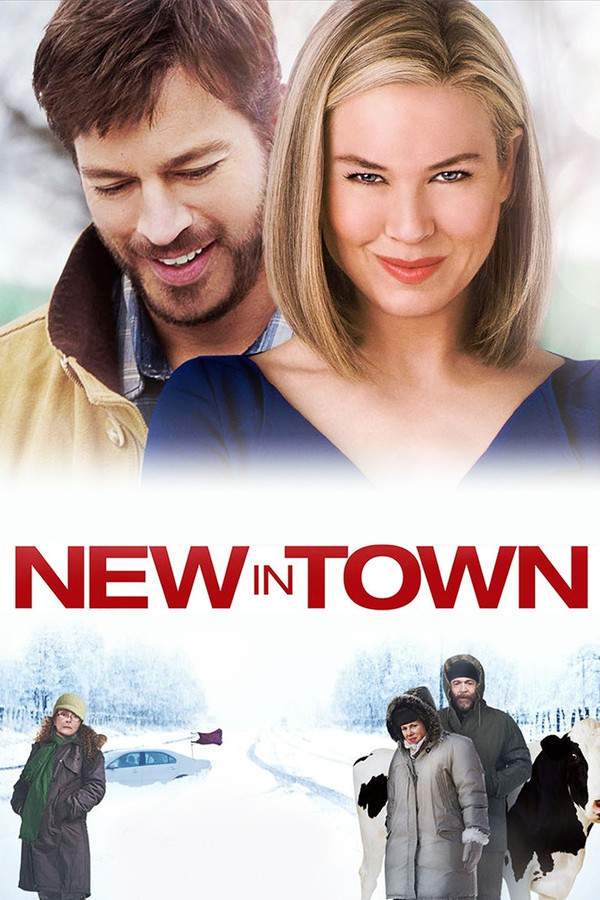
Sweet Land 2006
Sweet Land Plot Summary
Read the complete plot summary and ending explained for Sweet Land (2006). From turning points to emotional moments, uncover what really happened and why it matters.
Winner of the Audience Award for Best Narrative Feature at the 2005 Hamptons International Film Festival, Sweet Land beautifully captures themes of land, love, and the immigrant experience in America.
In 2004, when Lars Torvik’s grandmother Inge passes away, he faces a pivotal choice—should he sell the family farm that has been in the family since 1920, or should he hold onto the legacy bestowed by the land? In search of guidance, Lars reflects on Inge’s life and the rich stories she shared.
Inge arrives in Minnesota in 1920, eager to marry the young Norwegian farmer Olaf. However, her German roots and absence of proper immigration documentation make her a target of suspicion among the locals, leading to a ban on her marriage to Olaf. Stranded and alone, Inge seeks refuge with Frandsen, Olaf’s neighbor, and his wife Brownie, where she begins to learn English, adapt to American culture, and cultivate her independence.
As time passes, Inge and Olaf develop a deep affection for each other amidst the vastness of the farmland and towering skies. Despite societal judgment and the disapproval of the local minister, they opt to live together openly, embracing their love. When Frandsen’s farm faces foreclosure, Olaf stands firm, prompting the community to rally behind the couple, ultimately accepting Inge into their fold.
Adapted from Will Weaver’s short story “A Gravestone Made of Wheat,” and filmed in the picturesque settings of Southern Minnesota, Sweet Land embodies that rare quality of independent cinema, combining exquisite visuals and subtle performances to convey a timeless narrative of love and self-discovery. David Tumblety’s stunning magic-hour cinematography invokes the spirit of classic American art films like Days of Heaven, transforming the golden vistas of Southern Minnesota into a heartfelt symbol of memory, family ties, and cultural heritage.
Featuring supporting roles by esteemed actors like Ned Beatty, Paul Sand, and Lois Smith, Sweet Land emerges as a poignant testament to immigrant America, crafted by the son of first-generation immigrants.
Sweet Land Timeline
Follow the complete movie timeline of Sweet Land (2006) with every major event in chronological order. Great for understanding complex plots and story progression.
Lars Inherits the Family Farm
In 2004, Lars Torvik is faced with a monumental decision following the death of his grandmother, Inge. He must decide whether to sell the family farm that has been in the family since 1920 or maintain the legacy and connection to his ancestors.
Reflecting on Inge's Life
As Lars grapples with his choice, he finds solace in reflecting on his grandmother's life. Through her stories, he seeks guidance and understanding of what the farm truly represents for their family.
Inge Arrives in Minnesota
In 1920, Inge makes her journey to Minnesota with dreams of marrying Olaf, a young Norwegian farmer. However, her German heritage leads to problems due to her lack of proper immigration papers.
Facing Suspicion
Upon her arrival, Inge becomes a target of suspicion among the local townsfolk. The stigma of her background results in a ban on her marriage to Olaf, leaving her feeling stranded and isolated.
Finding Refuge with Frandsen
With nowhere else to turn, Inge seeks refuge at the home of Frandsen, Olaf's neighbor, and his wife, Brownie. This opportunity allows her to learn English and adapt to the new culture while cultivating her independence.
Developing a Bond with Olaf
As the seasons change, Inge and Olaf's relationship blossoms amidst the fields and wide skies. They share deep affection, despite the judgment from the local community and disapproval from the minister.
Choosing to Live Together
Defying societal norms, Inge and Olaf decide to live together openly. Their choice symbolizes a courageous step against the community's prejudice as they embrace their love for one another.
Frandsen's Farm Crisis
When Frandsen's farm faces foreclosure, Olaf steps forward to defend their shared community values. His bravery inspires the locals to come together in support of the struggling couple.
Community Acceptance
The townspeople begin to accept Inge into their lives as they witness Olaf's dedication and the bond between him and Inge. This acceptance marks a significant turning point in the narrative of their love story.
A Story of Immigrant Experience
Throughout the film, *Sweet Land* transcends a simple love story to explore deeper themes of the immigrant experience in America. The narrative evokes empathy and connection to the struggles faced by those seeking a place in a new land.
Cinematic Representation
The film, adapted from Will Weaver's short story, is noted for its stunning cinematography by David Tumblety, which captures the golden vistas of Southern Minnesota. It transforms the landscape into a heartfelt symbol of memory, family, and cultural heritage.
Recognition at Film Festivals
In 2005, *Sweet Land* received the Audience Award for Best Narrative Feature at the Hamptons International Film Festival. This accolade highlighted its resonance with audiences and its timeless exploration of love and self-discovery.
Legacy of the Film
The narrative of *Sweet Land* serves as a testament to the independent film movement. Its blend of exquisite visuals, strong performances, and culturally rich storytelling continues to resonate with viewers and critics alike.
Sweet Land Characters
Explore all characters from Sweet Land (2006). Get detailed profiles with their roles, arcs, and key relationships explained.
Inge
Inge is a determined and resilient character who represents the challenges faced by immigrants. Arriving in Minnesota with dreams of love and acceptance, she adapts to her new environment while navigating societal prejudices. Inge's journey is one of self-discovery, as she learns to assert her identity and embrace her love for Olaf despite the odds stacked against her.
Olaf
Olaf is a compassionate and steadfast Norwegian farmer dedicated to his love for Inge. Despite societal judgment and challenges, he remains loyal and supports Inge, demonstrating a deep understanding of love that transcends cultural boundaries. His character embodies the spirit of perseverance, as he fights for his beliefs and his relationship with Inge.
Frandsen
Frandsen is Olaf's neighbor who becomes a crucial ally to Inge during her struggles. His kindness and hospitality provide her with refuge and support while she adapts to American life. Frandsen’s character represents the themes of community and solidarity, illustrating how connections can forge acceptance for those who initially face rejection.
Sweet Land Settings
Learn where and when Sweet Land (2006) takes place. Explore the film’s settings, era, and how they shape the narrative.
Time period
1920s
The movie is set primarily in the 1920s, a period marked by significant immigration to the United States, as people sought new opportunities and a better life. This time reflected both the challenges and aspirations of immigrants, as they navigated societal prejudices and established their identities in a new country. Inge's arrival in Minnesota during this era highlights the complexities of love and acceptance in the face of adversity.
Location
Southern Minnesota, Minnesota
Southern Minnesota serves as the picturesque backdrop for *Sweet Land*, known for its sprawling farmlands and golden vistas. The region is steeped in rich agricultural history and is symbolic of the American immigrant experience, where diverse cultures have converged. Its stunning landscapes evoke a sense of nostalgia and connection to the land, central to the film's narrative.
Sweet Land Themes
Discover the main themes in Sweet Land (2006). Analyze the deeper meanings, emotional layers, and social commentary behind the film.
❤️
Love
At the heart of *Sweet Land* is a profound exploration of love, transcending cultural and societal barriers. Inge and Olaf's relationship defies the odds, showcasing the strength of their bond amidst external challenges. Their journey is emblematic of the idea that true love perseveres, illuminating the indomitable spirit of human connection.
🌍
Immigrant Experience
The film poignantly depicts the immigrant experience in America, shedding light on the struggles and triumphs faced by those seeking a new life. Inge's journey emphasizes themes of resilience and adaptation, as she learns to embrace her new surroundings while holding onto her roots. The narrative illustrates the rich tapestry of cultures that contribute to the American identity.
🏡
Heritage
Heritage is a central theme in *Sweet Land*, reflecting the importance of family ties and the legacy of the land. Lars's contemplation of selling the family farm embodies the conflict between progress and tradition. The story underscores the notion that our roots shape who we are, and the connection to the land is an integral part of identity and belonging.
Movies with Similar Twists and Themes
Uncover films that echo the narrative beats, emotional arcs, or dramatic twists of the one you're exploring. These recommendations are handpicked based on story depth, thematic resonance, and spoiler-worthy moments — perfect for fans who crave more of the same intrigue.
Featured on this page

What's After the Movie?
Not sure whether to stay after the credits? Find out!
Explore Our Movie Platform
New Movie Releases (2025)
Famous Movie Actors
Top Film Production Studios
Movie Plot Summaries & Endings
Major Movie Awards & Winners
Best Concert Films & Music Documentaries
© 2025 What's After the Movie. All rights reserved.

















